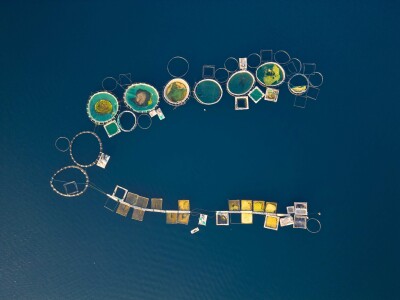Amid shifting U.S. trade policy, two prominent Alaska seafood industry organizations are thinking strategically about how they can bring Alaska seafood to emerging markets around the globe.
On May 1, the Association of Genuine Alaska Pollock Producers (GAPP) announced that it had received funds to support six projects in three emerging markets: Brazil, Colombia, and India. The funds will come from the U.S. Department of Agriculture, Foreign Agriculture Service (USDA-FAS) Emerging Markets Program (EMP).
The markets were themselves chosen through a study conducted by GAPP, using previously awarded USDA EMP funds. GAPP CEO Craig Morris said that the ambitious study, called Wild Alaska Pollock 2040, identified the three nations as “the most promising export markets for our fish.”
This latest round of USDA EMP funding will go to six discrete projects, three which fund trade missions of industry leaders to the new markets and three which fund critical research into further understanding those markets.
Morris said that his organization was “grateful for these news funds from USDA to continue to better understand the specific opportunities these foreign markets offer and bring our industry leaders overseas to interact with new buyers to build even greater global demand for U.S.-caught Wild Alaska Pollock.”
In Brazil, that research will work to understand why Brazilian consumers remain unfamiliar with Alaska Pollock, and how that headwind can be addressed by the industry.
In Colombia, it will study the opportunities for Wild Alaska Pollock fillet and surimi in a market which, GAPP said in a press release, had recently “seen dramatic increases in Wild Alaska Pollock demand and consumption.”
In India, which GAPP said is one of the largest potential markets on earth, the organization will study the growing demand for Wild Alaska Pollock surimi products.
Morris said that one of the “greatest services GAPP can provide to its members is actionable intelligence that they can utilize to better sell Wild Alaska Pollock around the world.” He added that the research projects had been designed based on real requests from GAPP members, “to understand the markets they’re working to break into.”
Meanwhile, a representative from the Alaskan Seafood Marketing Institute, another industry group which promotes Wild Alaskan seafood, told SeafoodSource that they were committed to continuing their global outreach program despite the current U.S./China trade war.
While the representative said that the organization wasn’t planning any new outreach to Chinese consumers, he did say that ASMI will continue “doing what we always do: promoting Alaska seafood in markets, both domestic and international, where it is sold.”
“Due to the size and importance of the market, ASMI does have a presence and budget for marketing in China. We continually monitor markets for access, demand, and opportunity and shift budgets strategically,” he added.
As GAPP reported in February, 2024 was a record year for American consumption of Wild Alaska Pollock. The increase in consumption even convinced Bellingham, Washington, U.S.A.-based Trans-Ocean, a subsidiary of Japanese firm Maruha Nichiro, to invest in expanding its surimi plant in Washington.
This piece was published with permission from Seafood Source.







